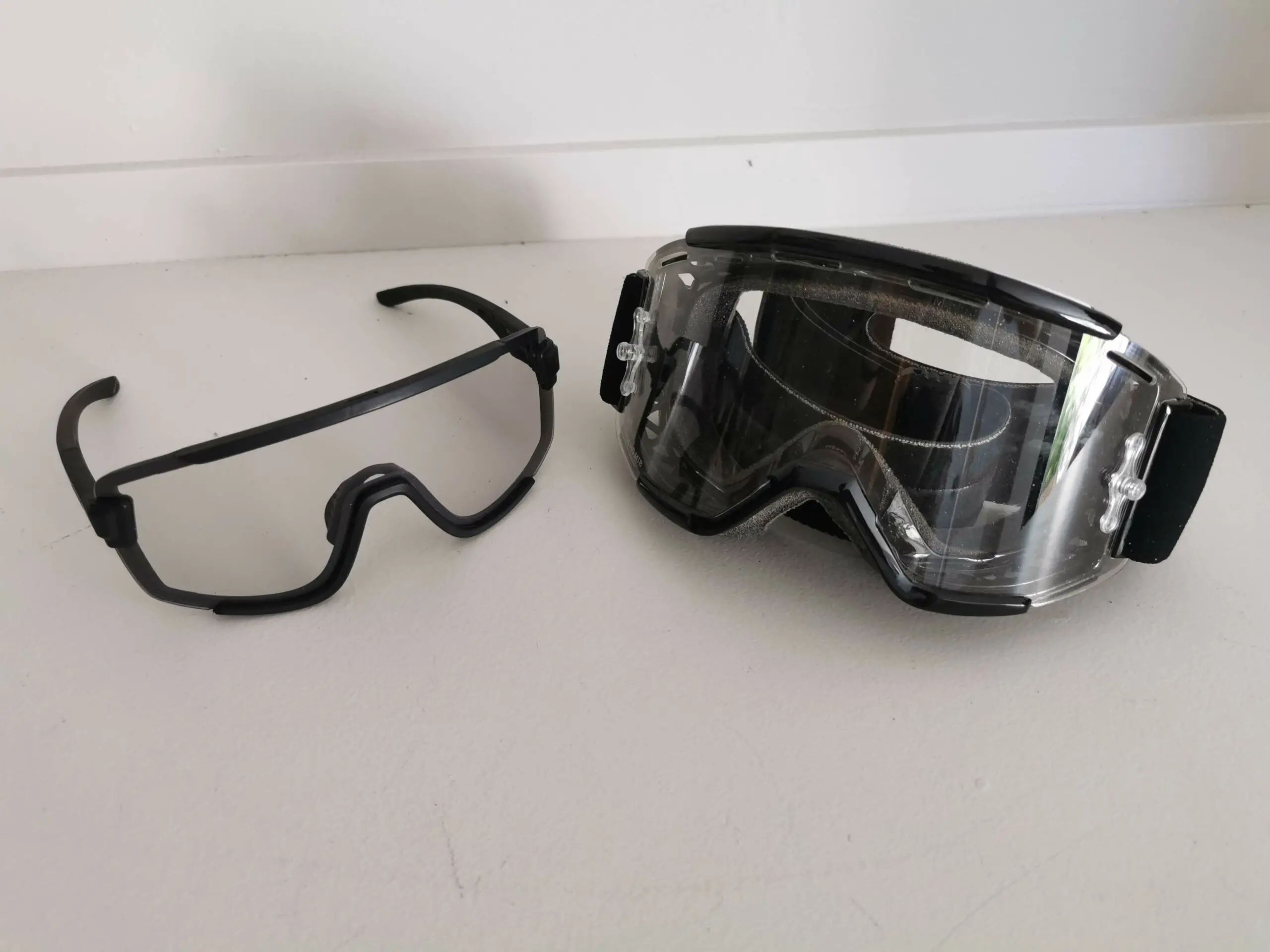When it comes to protecting your eyes while mountain biking, it’s crucial to make a conscious choice. While there are various options available, two common choices are mountain bike glasses and goggles. Let’s examine the pros and cons of each to help you determine which is best for you.
Factors to Consider
Let’s start by considering some important factors and how both glasses and goggles fit into them.
1. Impact Protection:
Goggles clearly outshine glasses in terms of impact protection. They offer more coverage, a secure fit, and their padded area absorbs a significant amount of impact during a crash. In contrast, glasses provide limited impact protection and are prone to breaking or falling off. While glasses can reduce the chance of small objects damaging your eyes, they pale in comparison to the protection offered by goggles.
2. Debris Protection:
For most debris encountered during mountain biking, glasses are typically sufficient. However, dust and larger debris pose a challenge. Fine dust can partially enter behind glasses, causing irritation, while goggles provide complete protection. When it comes to large debris, goggles once again offer superior protection due to their similarity to impact protection.
3. Peripheral Vision:
Glasses have minimal impact on peripheral vision, thanks to their small, close-fitting frames. On the other hand, goggles, with their bulkier frames, may obscure peripheral vision, which can be distracting for some riders.
4. Lens Options (Clear, Tinted, Photochromic):
Both goggles and glasses offer interchangeable lenses, but it’s important to check whether the specific models you’re considering have this feature. Lens interchangeability allows you to adapt to different lighting conditions, enhancing your riding experience.
5. Ventilation and Fog Resistance:
Glasses provide excellent ventilation, preventing fogging and overheating on hot days. They are suitable for both uphill and downhill rides without causing discomfort. Goggles, however, offer limited ventilation compared to glasses. While some goggles offer better ventilation than others, they are more prone to fogging up and are generally not recommended for uphill rides.
MTB Glasses

For 99% of my riding, I personally prefer glasses. They are lightweight, comfortable, and available with various lens options, all while providing superior eye protection. Glasses do not restrict vision and can even enhance it by allowing you to choose the most suitable lens for the riding conditions. They are a “set and forget” option, ideal for both uphill and downhill rides, without disrupting your field of view.
On chilly days, when your eyes tend to water due to the cool breeze, MTB glasses are a great solution. It’s worth noting that when I refer to MTB glasses, I mean glasses specifically designed for mountain biking. These glasses feature sturdy frames and shatterproof lenses to ensure they don’t cause more harm than good in the event of a crash.
In general, MTB glasses are best suited for cross-country, trail, and enduro riders who engage in both uphill and downhill rides and are willing to sacrifice some convenience and comfort for enhanced eye protection.
MTB Goggles
Goggles offer a complete seal around the eyes, providing the highest level of protection at the cost of ventilation. Some riders may find the visible framing in their peripheral vision bothersome, so it is advisable to try on goggles before making a purchase decision.
Like glasses, select models of goggles come with interchangeable lenses, allowing for improved vision in different lighting conditions.
Due to their limited ventilation, goggles are less comfortable for uphill rides. They are commonly worn by downhill and enduro riders seeking enhanced protection during descents. If you do find yourself wearing goggles uphill, you can either lift them onto your helmet or drop them around your neck.
Choosing the Right Option – Goggles or Glasses?
In summary, the choice between goggles and glasses depends on the type of riding you do and your personal preferences regarding how you wear eye protection and the desired level of protection.
Cross-country, trail, and some enduro riders will find glasses to be a better fit, while downhill and certain enduro riders may prefer goggles. Additionally, keep in mind that glasses are compatible with any helmet, whereas wearing glasses with a full-face helmet may not be considered fashionable by some. However, the decision ultimately rests with you and how much that aesthetic factor influences your choice.
Goggles are compatible with almost all modern helmets, with the exception of some cross-country style helmets or road/commuter helmets. However, it is generally not recommended to use a road bike helmet for mountain biking.

Conclusion
In conclusion, both goggles and glasses have their place in mountain biking. The decision ultimately boils down to personal preference and the type of riding you engage in. Whichever option you choose, it is vital to conduct thorough research and try on several pairs before making a purchase.
Remember, when it comes to protecting your eyes, it’s worth investing in quality eyewear designed specifically for mountain biking. Using designer sunglasses is not recommended, as they may pose a greater risk to your eyes and glasses in the event of a crash. Opt for MTB-specific glasses, featuring impact-resistant designs to ensure your eyes remain safe while enjoying your rides.
Still not convinced eye protection is a good idea? Check out our reasons why here.
